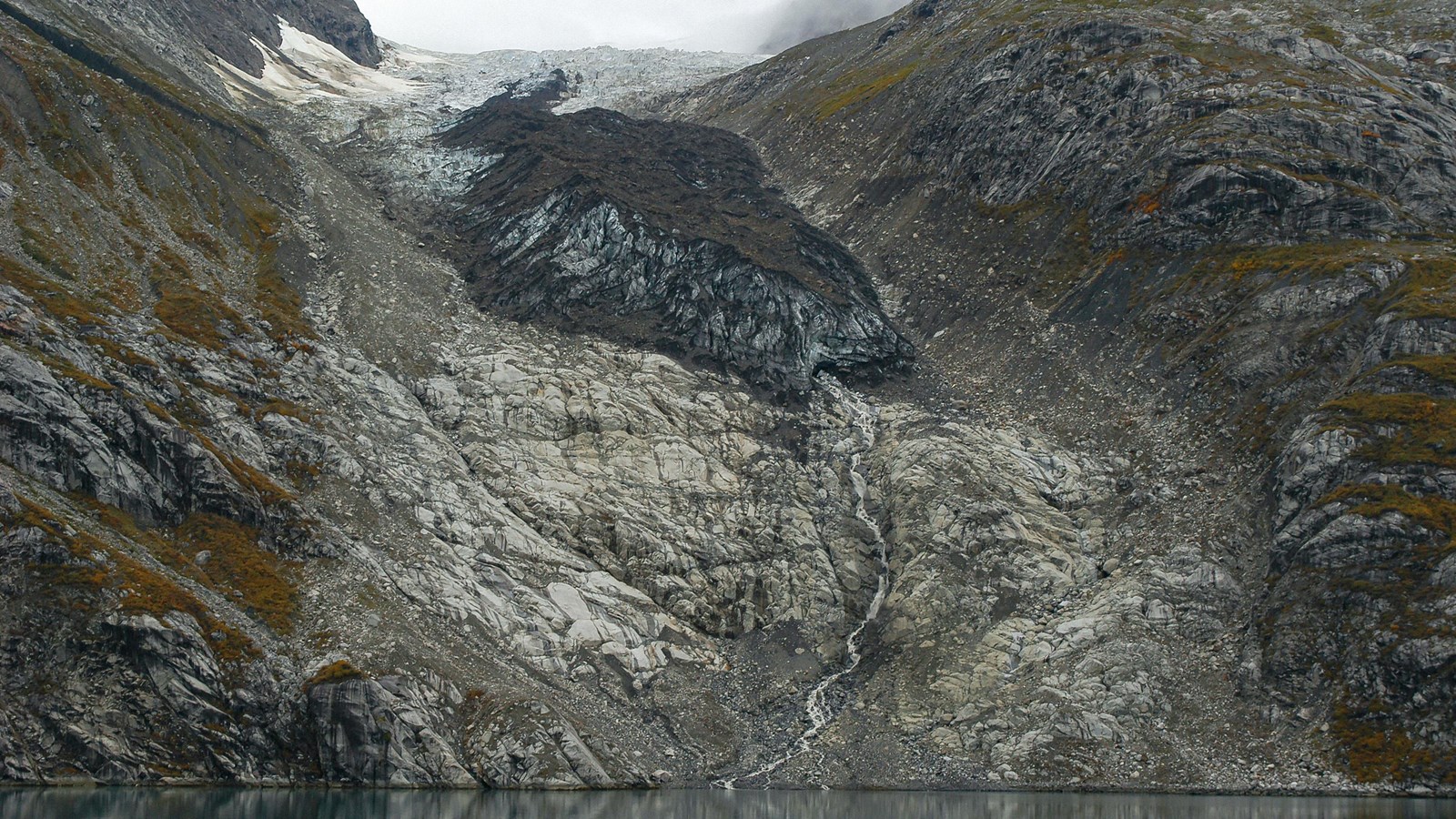Last updated: April 8, 2021
Place
Glacial Landscape Features in Glacier Bay

NPS Photo
The Glacier Bay landscape has clues that tell the story of past glaciers. Studying the mountain peaks, some are rounded on top, while others have jagged, sharp peaks. Some of the rocks exhibit deep scratches that were etched by past glaciers. Learn the anatomy of a Glacier on our website.
This is a young landscape, only about 100 years old. Before that the land was locked under a massive glacier. That thick glacier would have rounded off the lower peaks, while those sharp peaks would have been sticking up above the glacier, like islands of rock. You can read the landscape to see the height of the glacier in the past. Look up to the place where rounded rock gives way to jagged peaks – that was the height of the glacier, about 1 mile thick.
In some ways, a glacier is Nature’s bulldozer, pushing and reshaping everything in its path. Clearing the landscape and preparing it for future stories.
The valleys tell the story of glacial carving. As glaciers grow they slowly flow down the mountains picking up rocks and debris along the way. These imbedded rocks act like a giant rasp grinding away the mountains at the sides and below the glacier.
As the climate changes and the glaciers lose their source of snow, it will retreat back into the mountains, leaving behind a wide U-shaped valley. In many cases, the valley becomes a river system, and the river carries debris out into the waterway, forming a delta of land.
Traveling through Glacier Bay, other marks upon the land tell the tale of glacial carving.
